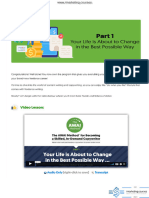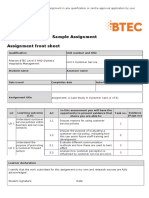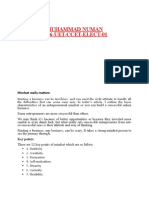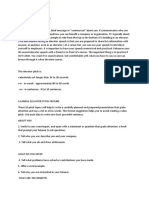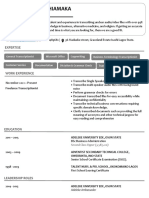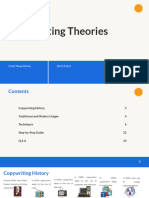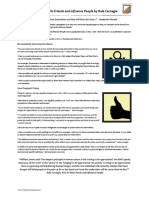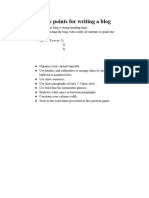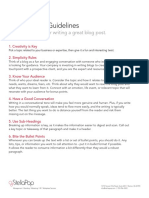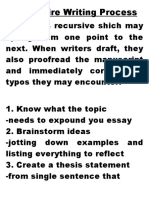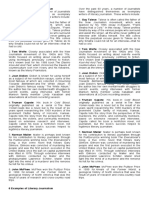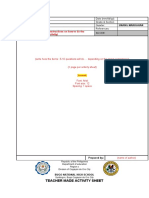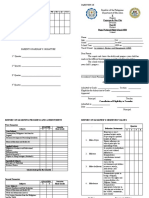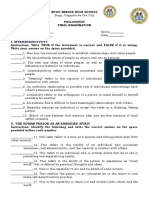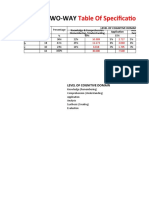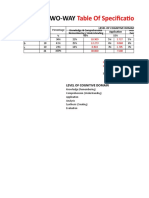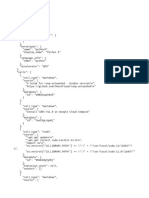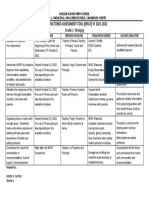How to Write a Blog Post in 10 Steps
It is your job as a blogger to seek out resources that will continually improve your writing and make your
blog that much more successful. Here’s a list of tips that can help improve your blog posts.
1. Address a compelling topic. The most popular posts address a compelling topic that will appeal to
your target audience. Once you’ve settled on a topic that fits your blog’s area of focus, it’s time to put
your writing skills to work and start to craft the corresponding blog post.
2. Come up with a great post title. Titles are important in attracting an audience to your blog and
getting your post pageviews. Without a title that attracts eyes, a good blog post can languish. Come up
with a catchy title that will hook readers and make them want to read your article.
3. Outline your post. Before you begin writing, it’s important to outline your post. Blogs allow you the
freedom to experiment with structure and form. Decide how you want to lay out your ideas and outline
your post in order to walk readers through your thought process and help them relate to your point of
view.
4. Explain your connection to the topic. From the beginning, blogging has been a highly personal form
of writing. Bloggers connect with their audience and produce great content by making their blog
writing personal and demonstrating a connection with their blog content.
5. Use a clear layout. Most successful blogs have short paragraphs with clear topics. Often bloggers will
use bullet points list out ideas that support their main point. Make sure your post is laid out in a clear
and visually clean way to help readers follow along with your thoughts.
6. Write from the heart. Bloggers are no different from other writers in that they occasionally suffer
from writer’s block. The most important thing you can do to overcome stumbling blocks in your work
is to come up with blog post ideas that you connect with on a deep, personal level. Writing blog posts
should be a labor of love. Writing blog posts that you feel passionately about will help readers connect
with your work and grow your audience base.
7. Propose solutions. It’s important to have a clear point of view in your blog posts and wrap up posts
with a clear conclusion or solution to a problem you’ve focused on. It’s not enough to just give a
cursory overview of a topic, readers depend on you to walk them through an issue in a well-informed
way. Instead of giving light anecdotal examples, provide your readers with a well-sourced case study
that relates to the topic at hand.
8. Consider search engine optimization. Make sure that your page SEO is up to snuff in order to get
clicks on your articles and bring new readers to your page. Research SEO trends and SEO key terms
and compare your blog post against the top-ranking results for search terms relevant to your topic.
Ideally, you want to make sure your posts are near the top of search engine results.
9. Proofread. Once you have a first draft of a blog post, it’s time to do a read-through to look for typos
and tweak awkward sentences. New bloggers working on their first blog often skip this part of the
process and rush to publish their new posts. It’s not enough to focus on search engine optimization or
designing a flashy infographic for your homepage; professional bloggers should take pains to make
sure their posts are free from typos and careless errors.
10. Promote your writing. Once you have enough posts on your blog, it’s time to start networking and
promoting your work. Promotion is especially important if your blog is connected with your business.
Consider appearing on a podcast, starting an email list, or guest blogging on a related blog as ways to
promote your own work. Content marketing is a hugely important part of being a successful blogger.
Make sure to tweet and post about your work on social media, showcasing blog posts that are
particularly good examples of the sort of writing readers can find on your blog.













